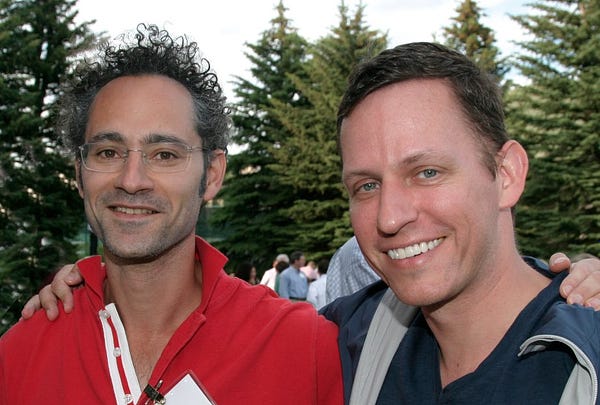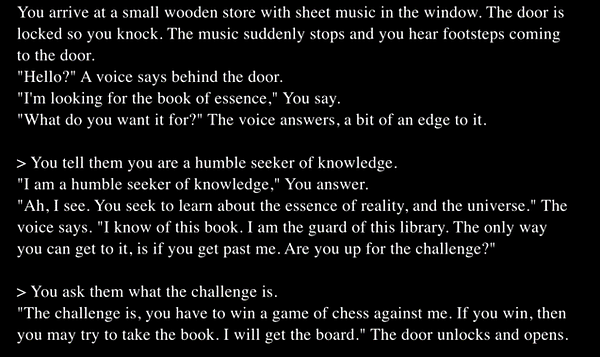S-1's, Predicting the Future, Tabletop Gaming Meets AI, Learning with Eddie Lampert
"Investing is the most extreme version of competitive learning."
Tearing Down S-1's
Last week we saw a flurry of S-1 filings. I enjoy browsing through "teardowns" to get up to speed on these companies which are often way outside my circle of competence. However, there is only so much information you can glean from an S-1. The exercise becomes a lot more valuable when the writer/analyst has experience in the respective industry and can provide context, comment on the product, history, competition, and management.
Rather than one writer cranking 24/7 to understand all of these different businesses, this feels like a problem to be solved by a network/community. Ideally, one could form small groups of people already familiar with the company (and time on their hands) and a common framework for analyzing and writing up companies and business models. S-1 Club looks like a first attempt at this.
Mike’s observation is also valid: there are other areas worth studying: failing companies/IPOs, CEO changes, corporate governance (definitely follow him for that!), shifts in strategy/transformation deals, etc.

Anyway, if you come across any good S-1 breakdowns or company analyses, I would love to hear from you. Perhaps we can start crowdsourcing the best.
For Snowflake, I enjoyed this blog post which put the company's metrics in context relative to other SaaS companies (even though it’s not a classic SaaS company.)


For Ant Financial, the Chinese fintech behemoth, I enjoyed this short write-up:
"Alipay built its financial services strategy around two resources: access to data and access to customer funds. In 2014 it restructured as Ant Financial and raised private capital (Alibaba retained a profit share but converted that into a 33% equity interest last year). It obtained a license to operate a new banking business, MyBank, and promoted the money market fund, Yu’e Bao, it had launched a year earlier."
"For most banks the current (or checking) account is the anchor product—they start with savings and move into payments as an extension of that. Ant Financial did it the other way round. Its path was made slightly easier by the relative unimportance of payments income to Chinese banks. They made most of their money from spread income, generating very little from payments fees, and so did not consider Ant much of a threat."
"Ant Financial offers products across five business areas—payments, wealth management, credit scoring, lending and insurance."
"The company has also said that 80% of customers use three or more financial services, and 40% use all five services."
I have a bunch of other ones in a spreadsheet tracker. Perhaps I’ll put them up on a static website at some point.
Speaking of S-1’s, I tweeted about Palantir's roots in Paypal's antifraud technology (a story I came across when reading up on Peter Thiel):
Paypal co-founder Max Levchin: "I think a good way to describe PayPal is: a security company pretending to be a financial services company. Everything else that PayPal built is sort of a commodity."
"Eventually, various federal and state authorities wanted to use it too, because they started to see that we were getting pretty good at this stuff."
In 2002, Paypal was sold to Ebay. Meanwhile, Alex Karp had finished his dissertation and returned to the US. He reconnected with his former college roommate Peter Thiel: "He called me one day and said, 'Hey, Alex, there's this methodology we had at PayPal. Think it would make a great company for stopping terrorism."


“Predicting the future is easy - the hard part is making money on it”
Corry Wang, a former tech analyst at Bernstein, shared his thoughts on investing in the tech sector. Good stuff:


It’s amazing how many companies are successful now with ideas that date back to the dot-com boom but weren’t feasible then. “Being too early is the same as being wrong.” Perhaps the most obvious example in the year of COVID-19 is food delivery, which crashed and burned in the form of Webvan.

I also liked this bundling/unbundling chart:

Speaking of bundling: after newspapers were unbundled by the web, we might eventually see a re-bundling once people experience ‘newsletter fatigue’ (perhaps in the form of curation emails like The Browser, or with a more vertical focus?). I already have way more thoughtful newsletter content in my inbox that I could possibly read.
To that end, this was a really interesting thread about re-inventing the local newspaper in the form of an email newsletter: basically internet/email whitespace without any of the legacy cost and an engaged audience.


In 2019, I set out to do something simple:
Recreate the local newspaper in digital form, by creating a simple daily newsletter focused on Victoria, Canada, my home town Newspaper
I hired a journalist and we started sending out a quick summary of what’s happening every day at 7AM...
It turns out people—at least in Victoria—are desperate to know what was happening in their local community.
1. We figured out the pareto principal. 80% of the results for 20% of the effort. We realized that the key thing people wanted was a simple briefing instead of a complex news website.
The job to be done was: “something to skim that gives me a rough sense of what’s happening”...
2. We cut out all the legacy costs of a news business. No printing press. No office. Cheap software (Mailchimp/Webflow).
These keywords are untouched. Nobody is spending money on news audience acquisition.
Now I own the largest daily audience in the city, with no gatekeepers (direct to inbox, no FB or platform risk).
I’m fascinated by the emerging “creator economy” and the amount of talent unleashed on the various channels and platforms. Of course a “local news-letter” has low barriers to entry and not at all the moat of the pre-internet newspaper duopolies.
I wonder if there is a first-mover advantage though: who is going to sign up for the third or fourth “local city newsletter” given scarce time and only marginal benefit?
Tabletop Gaming Meets AI
Despite being immersed in the Warhammer universe as a teenager, I missed out on the spectacular performance of Games Workshop stock. A huge mistake of omission. But I remain very interested in the owners of “fantasy universe IP” and the move of legacy IP/physical games into video gaming. Perhaps unsurprisingly my favorite writer on this topic is Matt Ball.
Hence my interest in this post by Jon Lain at Andreessen Horowitz: "The Digital Future of Tabletop Games". Jon laid out the case for a resurgence in tabletop gaming franchises due to new digital tools to connect communities, share and consume content, and play together online.
"One of the defining traits of tabletop games has been their focus on small group play. Most games are played in groups of only two to eight people. As a result, the tabletop games community has historically been fragmented and hyper-local. Yet over the last few years, the rise of community platforms and online play has gradually overcome these barriers and brought network effects to play."
"For hyper-local tabletop games like Magic and D&D, the rise of online community platforms like Discord and Reddit has been a game-changer. Over the past decade, these platforms have been able to stitch together fragmented groups into a connected online community. First-time players can make friends, discuss strategy, and listen in on live games from the comfort of their homes."
"Traditional tabletop games are being dramatically improved—and reinvented—by modern digital tools that provide innovative new playing experiences. Obtuse rulebooks can be overcome through livestreaming. User-generated digital content can provide endless replayability. Audio products create sustained engagement loops, despite infrequent play sessions.”
"As tabletop games and video games collide, it becomes increasingly likely that the next big innovation in social play will be a merger of the two."
One particularly interesting idea was his example of the GPT-3 AI conjuring up infinite scenarios for human players (rather than a human level-designer or writer). One step closer to living in the Matrix:


Podcast: Learning from Eddie Lampert
This was a very thoughtful podcast with Yen Liow of Aravt. Liow talked about drawing inspiration from Mongolian generals (pick unfair fights), the importance of game selection (matching your personality with games/strategies that you can win), and what he learned from Eddie Lampert (focus on training with case studies).
"Investing is the most extreme version of competitive learning. I can’t think of any professional sport where the training to the playing ratio isn’t dramatically towards the training."
"Genghis taught me to just focus on unfair fights. If you focus exclusively on unfair fights, we focus on economic monopolies and oligopolies ... there’s about 200 to 300 companies on Earth that fit the profile of what we do."
"Decoding is a very, very important part of what I do because I’m trying to work out persistent patterns of excellence."
"That’s the reason why I love biographies - everybody sort of idolizes the outcome. What I find most interesting is how do they deal with adversity, and every single one of them has dealt with tremendous adversity."
You can find my notes here:
That’s it' for today! Until next time.




